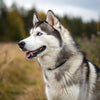Do Dogs Like Being Kissed? Understanding Canine Affection
- Houndsy
Table of Contents
- Introduction
- The Nature of Canine Affection
- Alternatives to Kissing: How to Show Affection
- The Science Behind Canine Emotions
- Case Studies: Dogs and Kisses
- Conclusion
Introduction
Have you ever leaned in for a kiss from your furry friend, only to be met with a puzzled look or a gentle retreat? As dog lovers, we often shower our pets with affection, but it’s essential to ask: do dogs like being kissed? This question taps into the heart of how we relate to our pets and how they perceive our gestures of love. In fact, studies suggest that while many dogs may tolerate kisses, they don’t inherently understand this human form of affection.
As we explore this topic, we’ll delve into canine behavior, the science behind dog emotions, and how to express our love in ways that resonate with our four-legged companions. By the end of this post, we aim to provide clarity on how dogs perceive kisses and suggest alternative ways to show affection that may be more enjoyable for them. So, grab a cozy spot with your pup, and let’s dive into the world of canine affection!
The Nature of Canine Affection
Understanding Dog Behavior
Dogs are social animals that communicate primarily through body language and vocalizations. Unlike humans, who express affection through hugs and kisses, dogs exhibit their feelings through tail wags, playfulness, and proximity. This difference in communication styles is crucial when considering how our beloved pets respond to kisses.
Body Language Signals
To better understand how your dog feels about kisses, it’s essential to observe their body language. Signs of comfort may include:
- Relaxed Ears: Ears in a neutral position indicate your dog is comfortable.
- Wagging Tail: A wagging tail, especially when combined with a relaxed body, is often a good sign.
- Leaning In: If your dog leans into you or presses their head against you, they likely enjoy your affection.
Conversely, signs of discomfort may include:
- Tensed Body: A stiff posture can indicate anxiety or discomfort.
- Yawning or Licking Lips: These are often signs of stress and may suggest your dog is feeling overwhelmed.
- Turning Away: If your dog turns their head or walks away, it’s a clear signal that they’re not comfortable with the affection being shown.
Can Dogs Understand Kisses?
While dogs are adept at reading human emotions, they do not instinctively understand the concept of kissing. According to animal behaviorists, dogs generally interpret human gestures differently. For instance, when we lean in to kiss, they might perceive it as a threat, especially if they are not familiar with the individual.
A study conducted by animal behaviorists revealed that dogs often react to human facial expressions and gestures but may not associate kisses with affection unless they have been conditioned to do so. For example, if a dog learns that kisses accompany treats or praise, they might begin to tolerate or even enjoy them.
Do Dogs Like Kisses?
The answer to whether dogs like being kissed is not a straightforward yes or no. Some dogs might enjoy the attention and reciprocate the affection, while others may find it uncomfortable.
For instance, a dog that has formed a strong bond with its owner may come to associate kisses with positive experiences. Conversely, a more reserved dog or one who has had negative experiences may shy away from such gestures.
The Role of Socialization
Socialization plays a significant role in how dogs perceive human affection. Dogs that have been exposed to a variety of human interactions from a young age are more likely to accept kisses and other forms of human affection. On the other hand, dogs that have not had these experiences may be more hesitant or fearful.
Alternatives to Kissing: How to Show Affection
Physical Touch
Instead of leaning in for a kiss, consider showing affection through gentle petting or a scratch behind the ears. Many dogs enjoy being petted on their sides, chest, or base of the tail.
Playtime
Engaging in play is another wonderful way to bond with your dog. Playing fetch, tug-of-war, or hide-and-seek are all activities that enhance your emotional connection while allowing your dog to express their excitement and joy.
Training Sessions
Training isn’t just about obedience; it can also be a fun way to bond. Teaching your dog new tricks or commands using positive reinforcement can create a rewarding experience for both of you.
Verbal Affection
Dogs respond well to the tone of voice. Using a cheerful and loving tone while speaking to your dog can convey affection without the need for physical gestures. Praising them with words can be just as effective as a kiss!
Quality Time
Simply spending time together can strengthen your bond. Whether it’s going for a walk, relaxing on the couch, or exploring new environments, the time spent together is invaluable for building trust and affection.
The Science Behind Canine Emotions
The Role of Oxytocin
Research shows that when we interact positively with our dogs, both humans and dogs experience a release of oxytocin, often referred to as the "love hormone." This hormone plays a significant role in bonding and social interactions.
Interestingly, the bond between dogs and their owners can mirror the bond between a parent and child. So even if your dog doesn’t enjoy kisses, the time spent together while engaging in mutual activities can foster a deep emotional connection.
Understanding Stress Signals
Recognizing when your dog is stressed is essential. Dogs may exhibit stress signals when they feel overwhelmed by human affection. By learning to recognize these signs, you can adjust your interactions to ensure they feel safe and comfortable.
Case Studies: Dogs and Kisses
Case Study 1: The Affectionate Labrador
Meet Bella, a playful Labrador retriever. Bella’s owner, Sarah, discovered that Bella loved kisses when she noticed her leaning in for more after every affectionate peck. Over time, Bella began to respond with licks and playful nudges, indicating her enjoyment of the interaction.
Case Study 2: The Hesitant Dachshund
On the other hand, we have Max, a reserved Dachshund. His owner, Tom, found that Max often turned away when he tried to kiss him. After observing Max’s body language, Tom switched to petting and playful interactions, which Max welcomed with wagging tails and happy barks.
These cases illustrate that each dog is unique in their preferences and comfort levels with human gestures of affection.
Conclusion
As loving pet owners, it's important to recognize that our dogs have their own ways of expressing and receiving affection. While some dogs may enjoy kisses, others may not feel the same way. The key is to pay attention to your dog's body language and preferences, ensuring that your interactions are enjoyable for both of you.
By opting for forms of affection that align with your dog's comfort level—such as play, petting, and quality time—you can foster a strong bond built on trust and love.
So, next time you feel the urge to kiss your dog, take a moment to consider how they might feel about it. Perhaps a gentle pat or a fun game would be a more appreciated gesture. Let’s create a joyful, loving environment for our furry friends, one that respects their unique personalities.
Frequently Asked Questions
1. Can I train my dog to accept kisses?
Yes, with positive reinforcement, you can help your dog become accustomed to kisses. Start slowly and pair kisses with treats or praise to create a positive association.
2. How can I tell if my dog enjoys affection?
Look for signs of comfort, such as wagging tails, relaxed ears, and leaning in towards you. If your dog seems tense or backs away, they might not be enjoying the interaction.
3. Are there breeds that are more likely to enjoy kisses?
While every dog is an individual, some breeds known for their affectionate nature, like Golden Retrievers and Labradors, may be more likely to enjoy kisses. However, personality varies greatly within breeds.
4. What are other ways to show my dog affection?
In addition to kisses, consider petting, playing, training, or simply spending quality time together. Dogs appreciate any form of positive interaction that makes them feel loved and secure.
5. Should I kiss my dog if they seem uncomfortable?
No, if your dog shows signs of discomfort or stress, it’s best to respect their boundaries and find other ways to show affection that they enjoy.
For a more convenient feeding experience that complements your dog's needs, consider the Houndsy Kibble Dispenser. With its elegant design and functional features, it makes mealtime a joy for you and your pet. Order Now to elevate your dog's feeding routine!













